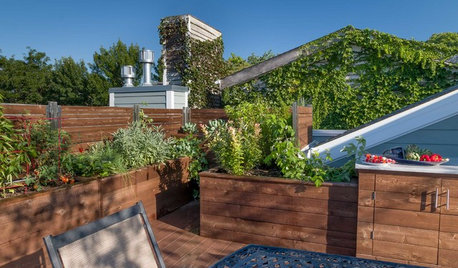When to Kill Overseeded Rye and Begin Leveling New Bermuda Sod
cansari
11 years ago
Related Stories

GARDENING GUIDES10 Tips for Beginning Gardeners
With a simple sketch, basic tools and the right plants, you’ll be on your way to growing your first flowers or edibles
Full Story
GRASSESHow to Rock a Lawn
Weekend Project: The key to healthy grass begins with the soil. If turf works for you, here’s how to fix it and keep it looking its best
Full Story
FRONT YARD IDEASBefore and After: Front Lawn to Prairie Garden
How they did it: Homeowners create a plan, stick to it and keep the neighbors (and wildlife) in mind
Full Story
GARDENING GUIDESNew Ways to Think About All That Mulch in the Garden
Before you go making a mountain out of a mulch hill, learn the facts about what your plants and soil really want
Full Story
EARTH DAYThe Case for Losing the Traditional Lawn
Work less, help the environment and foster connections by just saying no to typical turf
Full Story
GREAT HOME PROJECTSHow to Replace Your Lawn With a Garden
New project for a new year: Lose the turfgrass for energy savings, wildlife friendliness and lower maintenance
Full Story
SAVING WATERHouzz Call: Are You Letting Go of Your Lawn?
Many facing a drought are swapping turf for less thirsty plantings. If you’re one of them, we’d like to hear about it
Full Story
LANDSCAPE DESIGNIs It Time to Consider Fake Grass?
With more realistic-looking options than ever, synthetic turf can be a boon. Find the benefits and an installation how-to here
Full Story
EARTH DAY5 Ideas for a More Earth-Friendly Garden
Consider increasing the size of garden beds, filtering rainwater and using plants to reduce energy use
Full StoryMore Discussions







Serenity Lawn Service
cansariOriginal Author
Related Professionals
Beachwood Landscape Architects & Landscape Designers · Fitchburg Landscape Architects & Landscape Designers · Anderson Landscape Contractors · Canton Landscape Contractors · Bowie Landscape Contractors · Cordele Landscape Contractors · Holland Landscape Contractors · Middletown Landscape Contractors · Streamwood Landscape Contractors · The Villages Landscape Contractors · Hueytown Landscape Contractors · Buena Park Swimming Pool Builders · Glenn Heights Swimming Pool Builders · Orangevale Swimming Pool Builders · Phoenix Swimming Pool Buildersneilaz
ganny
dchall_san_antonio
Serenity Lawn Service
neilaz